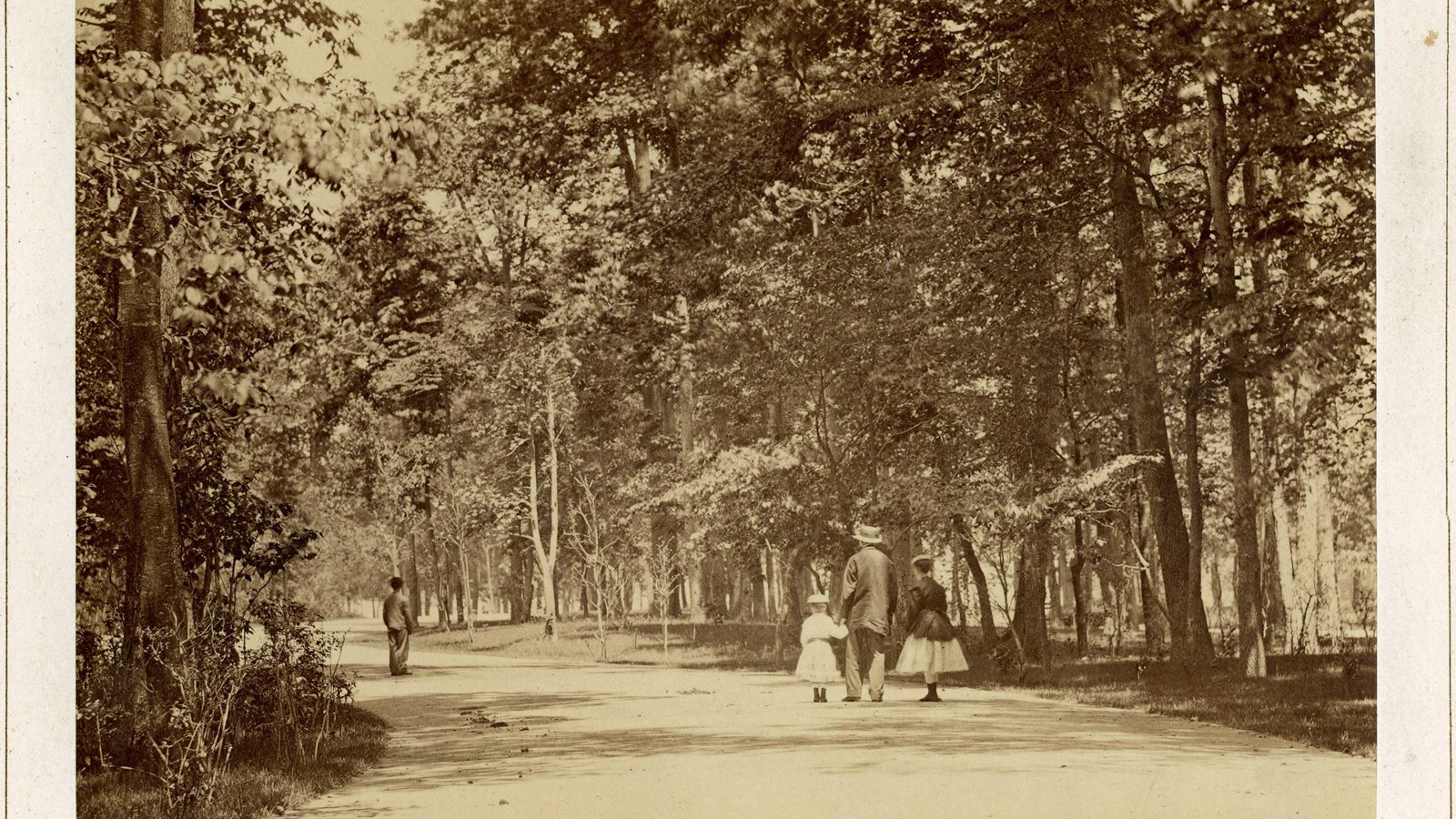Last updated: June 5, 2024
Place
Fort Greene Park

Olmsted Archives
Quick Facts
Location:
New York City, NY
Significance:
Olmsted Designed Park
MANAGED BY:
Originally the site for several forts used for the Revolutionary War, after conflict had ended the citizens of the surrounding land began instinctually using the area that would become Fort Greene Park for open space, free to the public.
Twenty years after being designated as a parkland, Frederick Law Olmsted and Calvert Vaux were engaged in 1867 to prepare a new design for the park, as well as a crypt for the remains of the 11,500 prison ship martyrs; brave men and women who died while imprisoned during the Battle of Long Island.
Olmsted and Vaux were likely hired to design the new park because of their growing involvement in creating the parks and open spaces of Brooklyn. Their design approach at Fort Greene called for a park of rural character, consisting of “a series of shady walks that will have an outlook of open grassy spaces at intervals”.
In addition to winding pathways and open lawns, there was a designated area for social gatherings, two playgrounds, an observatory, and room for a monument to the prison ship martyrs. While some of these design elements weren’t included at Central or Prospect Park, Olmsted and Vaux included them here, seeing them as appropriate to the site and neighborhood.
Though Olmsted and Vaux always intended for a formal monument to the prison ship martyrs, a lack of funding would interrupt its realization. After Olmsted and Vaux had both passed, the architectural firm of McKim, Mead, and White were brought in to complete it.
Today, the park retains much of Olmsted and Vaux’s original characteristics, with winding pathways, sloping lawns, and mature trees, including on 135-year old English elm.
Source: "Fort Greene Park," The Cultural Landscape Foundation
For more information and primary resources, please visit:
Olmsted Research Guide Online
Olmsted Online
Olmsted Archives on Flickr
Twenty years after being designated as a parkland, Frederick Law Olmsted and Calvert Vaux were engaged in 1867 to prepare a new design for the park, as well as a crypt for the remains of the 11,500 prison ship martyrs; brave men and women who died while imprisoned during the Battle of Long Island.
Olmsted and Vaux were likely hired to design the new park because of their growing involvement in creating the parks and open spaces of Brooklyn. Their design approach at Fort Greene called for a park of rural character, consisting of “a series of shady walks that will have an outlook of open grassy spaces at intervals”.
In addition to winding pathways and open lawns, there was a designated area for social gatherings, two playgrounds, an observatory, and room for a monument to the prison ship martyrs. While some of these design elements weren’t included at Central or Prospect Park, Olmsted and Vaux included them here, seeing them as appropriate to the site and neighborhood.
Though Olmsted and Vaux always intended for a formal monument to the prison ship martyrs, a lack of funding would interrupt its realization. After Olmsted and Vaux had both passed, the architectural firm of McKim, Mead, and White were brought in to complete it.
Today, the park retains much of Olmsted and Vaux’s original characteristics, with winding pathways, sloping lawns, and mature trees, including on 135-year old English elm.
Source: "Fort Greene Park," The Cultural Landscape Foundation
For more information and primary resources, please visit:
Olmsted Research Guide Online
Olmsted Online
Olmsted Archives on Flickr
